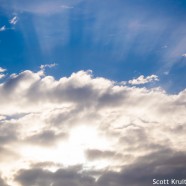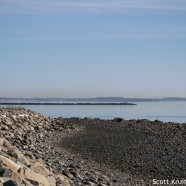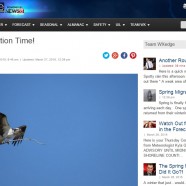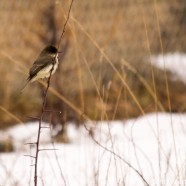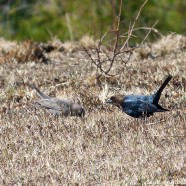Goodbye March Sky
As we say goodbye to March and its cold, dark and dreary skies we turn a hopeful eye to April when perhaps – after more chilly weather and possibly snow – we will see a return to normal climate conditions and much more life outdoors. March came in like a lion and and is leaving like a lion, but the sun will win. It always does. Warmth and growth are coming. Perhaps a lamb, too! Scott Kruitbosch Conservation & Outreach Coordinator
Read MoreAir Pollution in New York and Connecticut
Here’s the view from Stratford Point in Stratford, Connecticut on a recent March morning. There was no wind to speak of, even here on the coast, or throughout the Long Island Sound region. This lack of mixing in the surface air and atmosphere meant that haze and abundant air pollution was remaining directly over land and readily apparent. It did not take long for a sea breeze to develop as the day warmed followed by a light regional southerly flow, cleansing what was sitting on top of us. Nevertheless, it is stark reminder of what we are putting into the air we breathe while...
Read MoreSpring Bird Forecast #1 – Spring Migration Time!
Here’s the first Spring Bird Forecast brought to you by Audubon Connecticut and the Roger Tory Peterson Institute of Natural History. Migration is a go! http://wxedge.com/2015/03/27/spring-migration-time/
Read MoreEastern Phoebe Wet & Cold
This Eastern Phoebe is wet and cold today, and I had to crank up the ISO to get a recognizable photo of it in these dreary and foggy conditions. You can also see the snow on the ground behind the bird as we continue to have cover throughout the region. Even though it feels like a “warm” day we are still below our normal temperatures. Despite that the southerly flow has brought in migrants like this one. Have you had your Phoebe yet? Scott Kruitbosch Conservation & Outreach Coordinator
Read MoreBrown-headed Cowbird Pair
Last week I saw my first Brown-headed Cowbirds of the year, one of the blackbird species well known for making their way north in March. Here you can see a pair feeding in grasslands with the female on the left and the male, sporting his brown head, on the right. The species is a brood parasite, laying their eggs in the nests of other species, with familiar backyard birds like the Yellow Warbler being a common victim. I have seen them feeding the comically enormous fledglings quite often! Scott Kruitbosch Conservation & Outreach Coordinator
Read More



